Biden Administration’s Net-Zero Climate Agenda Is a Loser for Americans, International Energy Agency Confirms
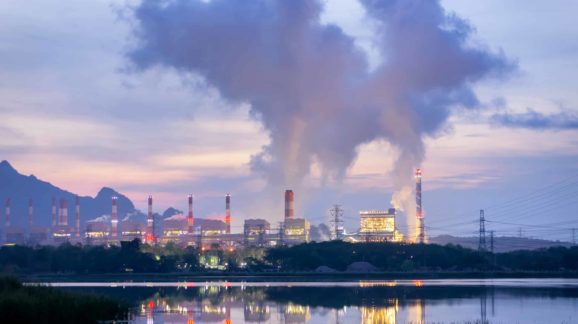
Photo Credit: Getty
The International Energy Agency (IEA) has just released two major reports that destroy the plausibility and advisability of the Biden administration’s net-zero climate agenda.
- Net Zero by 2050. Achieving “net-zero” carbon dioxide emissions by 2050 “calls for nothing less than a complete transformation of how we produce, transport and consume energy.”
- The Role of Critical Minerals in Clean Energy Transitions. Net-zero by 2050 will require an abrupt shift to wind, solar, and electric vehicle (EV) technologies that vastly expand the need for hard rock metals and minerals. These raw materials are largely mined or processed in China. The points that follow are related to this report.
Staggering Demand for Critical Minerals
The IEA finds that:
- Building wind and solar energy facilities requires far larger quantities of critical minerals than building conventional power plants; and
- Producing batteries for electric vehicles requires roughly six times more critical minerals than producing gasoline-powered vehicles.
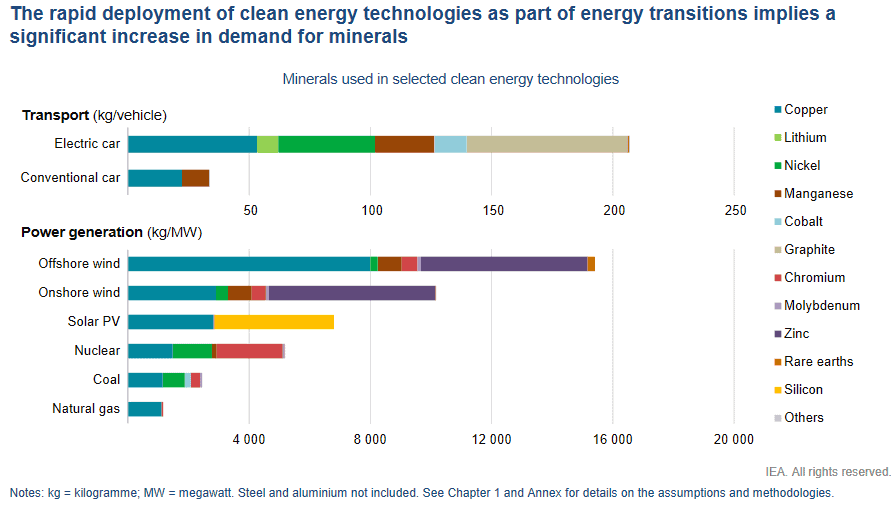
The IEA estimates that total demand for all the critical minerals required by the “clean energy technologies” necessary to reach the Paris climate treaty goals would increase by 400 percent by 2040. To reach net zero by 2050 would require a 600 percent increase in mineral production by 2040. Seven times more “rare earths” will be needed by 2040, 19 times more nickel, 21 times more cobalt,; 25 times more graphite, and 42 times more lithium.
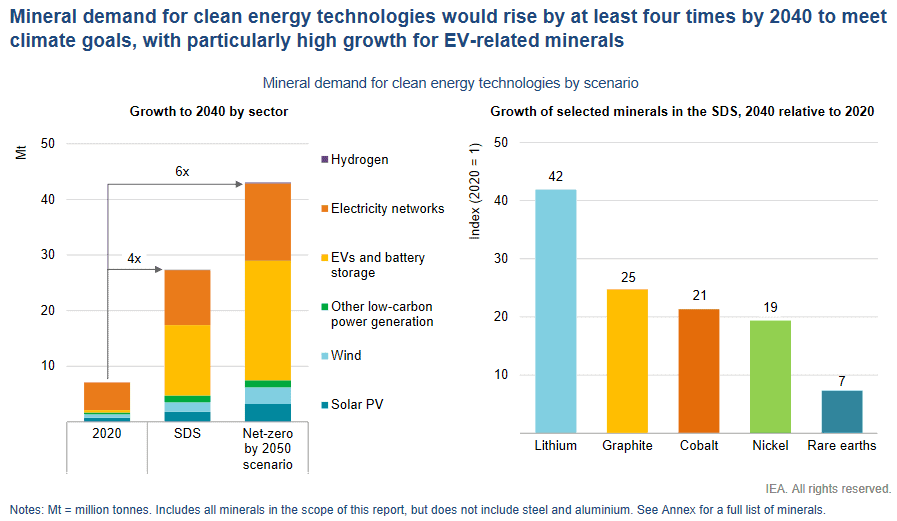
The IEA Lowballs Future Cost Estimates of Critical Minerals
The IEA report curiously projects that future cost increases of the critical minerals required for the “clean energy” transformation will be low, despite soaring demand:
Prices for energy transition minerals are based on conservative assumptions about future price trends [i.e., moderate growth of around 10-20 percent from today’s levels].
Yet, the report goes on to discuss at length the various factors that may constrain future supplies:
- “Today’s supply and investment plans are geared to a world of more gradual, insufficient action on climate change. … They are not ready to support accelerated energy transitions.”
- “Long project development lead times: Our analysis suggests that it has taken on average over 16 years to move mining projects from discovery to first production. These long lead times raise questions about the ability of suppliers to ramp up output if demand were to pick up rapidly.”
- “Declining resource quality: Concerns about resources relate to quality rather than quantity. In recent years, ore quality has continued to fall across a range of commodities.”
- “High geographical concentration of production: Production of many energy transition minerals is more concentrated than that of oil or natural gas. … The level of concentration is even higher for processing operations, where China has a strong presence across the board. China’s share of refining is around 35 percent for nickel, 50-70 percent for lithium and cobalt, and nearly 90 percent for rare earth elements.”
- “Growing scrutiny of environmental and social performance: Production and processing of mineral resources gives rise to a variety of environmental and social issues that, if poorly managed, can harm local communities and disrupt supply. Consumers and investors are increasingly calling for companies to source minerals that are sustainably and responsibly produced.”
Dr. David Kreutzer, senior economist at the Institute for Energy Research, summarized the cost issue (suggested by the chart from the IEA report, page 122, below) as follows:
The report does not say it out loud, but screaming between the lines is a warning of dramatic price increases for the minerals needed for the energy transition. Skyrocketing costs of these minerals are incompatible with glib assurances of green-energy cost improvements.
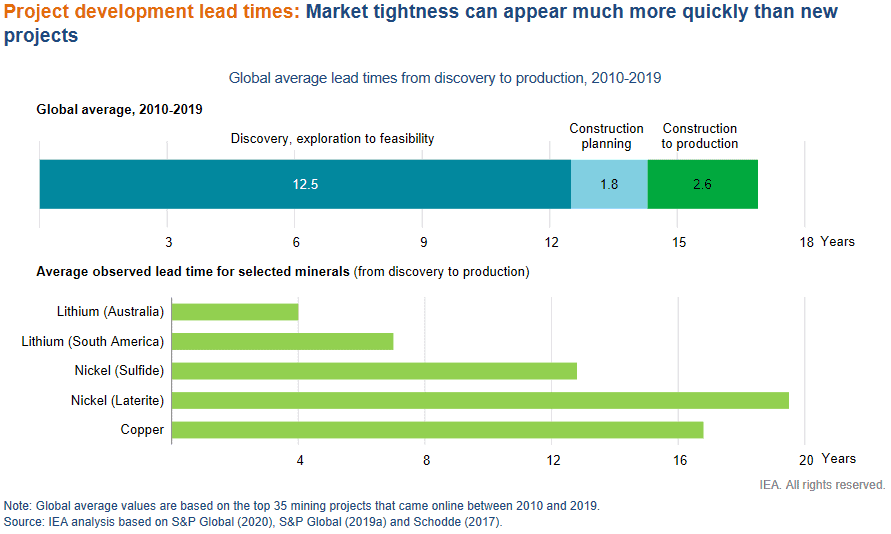
A Triple Whammy for America
The IEA exposes three ways (and there are others) in which the global climate agenda, enthusiastically embraced by the Biden administration, will have disastrous consequences for the United States if pursued.
1. No longer the world’s energy super power. Trying to replace the 80 percent of total energy now produced by coal, oil, and natural gas will require abandoning America’s new and hard-won place as the world’s energy super power. As a result of the shale oil and gas revolution aided by deregulatory actions taken by the Trump administration (now being reversed by the Biden administration), the U.S. has become the world’s leading producer of oil and natural gas. (Note that China produces more total energy because it is the world’s leading coal producer—although the U.S. has the world’s largest coal reserves.) After importing hundreds of billions of dollars of oil annually for decades, the U.S. in 2019 became a net oil exporter. In undertaking drastic reductions in the use of coal, oil, and gas, the United States will be forced to sacrifice an immense amount of wealth amounting to many trillions of dollars over the next three decades.

2. Dependence on foreign sources of critical minerals. Moving away from coal, oil, and natural gas to wind and solar energy and to electric vehicles will make the U.S. much more dependent on foreign sources of increasingly expensive critical minerals than it was ever dependent on foreign oil. Note that this is not a one-time changeover.
Wind turbines, solar panels, and electric batteries have limited lifetimes and will require an ongoing, massive replacement program. A burgeoning trade surplus in energy will be replaced by increasing trade deficits in minerals. This is not because the U.S. lacks mineral ore bodies; the U.S. has many highly mineralized areas containing most of the critical minerals required by EVs, wind, and solar.
Unfortunately, four decades of anti-mining political activism has driven most multi-billion-dollar investments in mining projects to other countries and caused tens of millions of acres of federal lands in the West and Alaska to be withdrawn from potential mineral production under the General Mining Law of 1866. On top of that, the Clean Air Act and other environmental statutes have made it nearly impossible to build the facilities necessary to process ore.
3. Putting China in charge of America’s energy economy. It’s not just about trading energy independence for reliance on foreign minerals. As the IEA report makes clear, China is the dominant producer and processor for several critical minerals. China is also the world’s leading producer of electric batteries for EVs, wind turbines, and solar panels. Closing down coal, oil, and gas production in favor of EVs and wind and solar energy means that the U.S.’s energy future will be dependent on China.
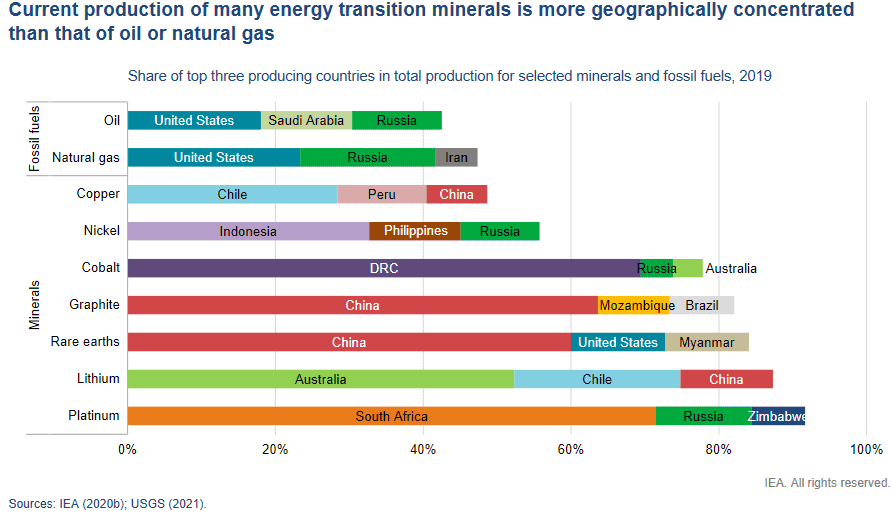
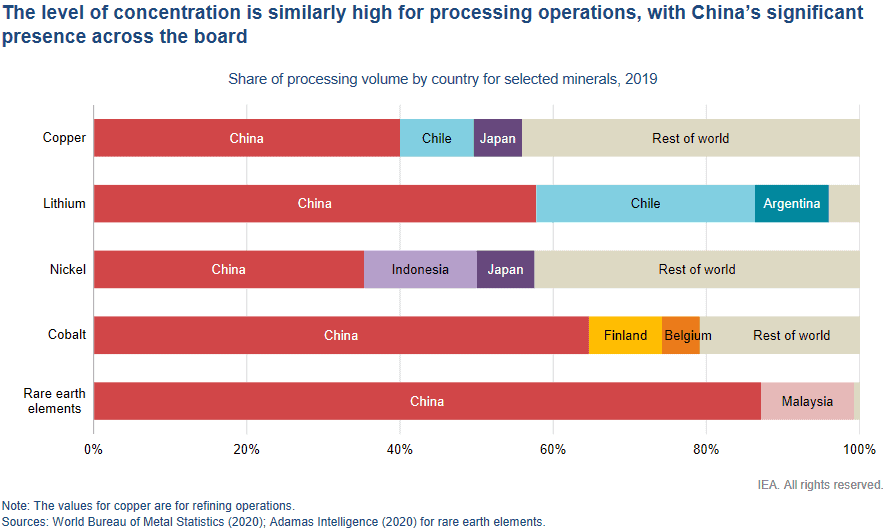
Not surprisingly, China is already manipulating its dominant position in processing critical minerals for its own geopolitical advantage. For example, The Wall Street Journal reported on May 22:
China is tightening its grip on the global supply of processed manganese, rattling a range of companies world-wide that depend on the versatile metal—including the planet’s biggest electric-vehicle makers. China produces over 90 percent of the world’s manganese products.